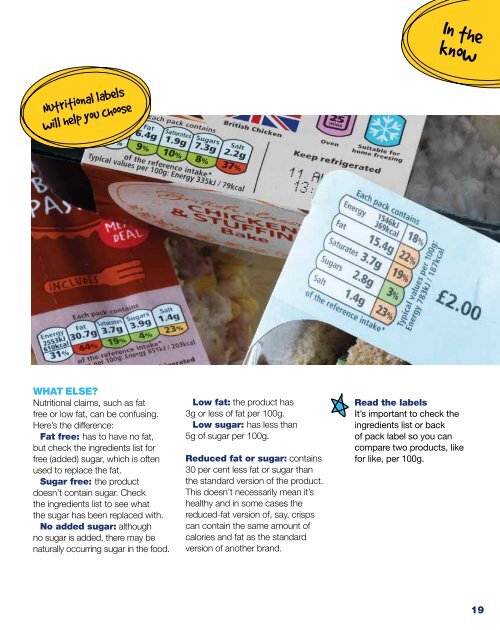Enjoy food
9f7d301hoGi
9f7d301hoGi
Create successful ePaper yourself
Turn your PDF publications into a flip-book with our unique Google optimized e-Paper software.
In the<br />
know<br />
Nutritional labels<br />
will help you choose<br />
WHAT ELSE?<br />
Nutritional claims, such as fat<br />
free or low fat, can be confusing.<br />
Here’s the difference:<br />
Fat free: has to have no fat,<br />
but check the ingredients list for<br />
free (added) sugar, which is often<br />
used to replace the fat.<br />
Sugar free: the product<br />
doesn’t contain sugar. Check<br />
the ingredients list to see what<br />
the sugar has been replaced with.<br />
No added sugar: although<br />
no sugar is added, there may be<br />
naturally occurring sugar in the <strong>food</strong>.<br />
Low fat: the product has<br />
3g or less of fat per 100g.<br />
Low sugar: has less than<br />
5g of sugar per 100g.<br />
Reduced fat or sugar: contains<br />
30 per cent less fat or sugar than<br />
the standard version of the product.<br />
This doesn’t necessarily mean it’s<br />
healthy and in some cases the<br />
reduced-fat version of, say, crisps<br />
can contain the same amount of<br />
calories and fat as the standard<br />
version of another brand.<br />
Read the labels<br />
It’s important to check the<br />
ingredients list or back<br />
of pack label so you can<br />
compare two products, like<br />
for like, per 100g.<br />
19


